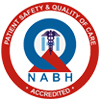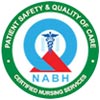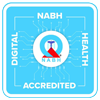
Understanding Congenital Heart Defects In Children
November 01, 2023
A congenital heart defect is a problem with the structure of the heart that a child is born with. Some congenital heart defects in children are simple and don't need treatment. Other congenital heart defects in children are more complex and may require several surgeries performed over a period of several years.Types Of Congenital Heart Defects
- Atrial Septal Defect (ASD)
- Atrioventricular canal defect
- Bicuspid aortic valve
- Coarctation of the aorta
- Congenital mitral valve anomalies
- Double-outlet right ventricle
- Ebstein anomaly
- Eisenmenger syndrome
- Hypoplastic left heart syndrome
- Kawasaki disease
- Long QT syndrome
- Partial anomalous pulmonary venous return
- Patent ductus arteriosus (PDA)
- Patent foramen ovale
- Pulmonary atresia
- Pulmonary atresia with intact ventricular septum
- Pulmonary atresia with ventricular septal defect
- Pulmonary valve stenosis
- Tetralogy of Fallot
- Total anomalous pulmonary venous return (TAPVR)
- Transposition of the great arteries
- Tricuspid atresia
- Truncus arteriosus
- Vascular rings
- Ventricular septal defect (VSD)
- Wolff-Parkinson-White (WPW) syndrome
Symptoms
Serious congenital heart defects usually are noticed soon after birth or during the first few months of life. Signs and symptoms could include:- Pale gray or blue lips, tongue or fingernails (cyanosis)
- Rapid breathing
- Swelling in the legs, belly or areas around the eyes
- Shortness of breath during feedings, leading to poor weight gain
- Easily becoming short of breath during exercise or activity
- Easily tiring during exercise or activity
- Fainting during exercise or activity
- Swelling in the hands, ankles or feet
Causes
To understand the causes of congenital heart defects, it may be helpful to know how the heart typically works. The heart is divided into four chambers, two on the right and two on the left. To pump blood throughout the body, the heart uses its left and right sides for different tasks. The right side of the heart moves blood to the lungs through the lung (pulmonary) arteries. In the lungs, blood picks up oxygen then returns to the heart's left side through the pulmonary veins. The left side of the heart then pumps the blood through the body's main artery (aorta) and out to the rest of the body.How Congenital Heart Defects Develop
During the first six weeks of pregnancy, the baby's heart begins to form and starts beating. The major blood vessels that run to and from the heart also begin to develop during this critical time. It's at this point in a baby's development that congenital heart defects may begin to develop. Researchers aren't sure exactly what causes most of these defects, but they think genetics, certain medical conditions, some medications, and environmental or lifestyle factors, such as smoking, may play a role. There are many different types of congenital heart defects. They fall into the general categories described below.Altered Connections In The Heart Or Blood Vessels
Altered connections allow blood to flow where it usually wouldn't. Holes in the walls between heart chambers are one example of this type of congenital heart defect. An altered connection can cause oxygen-poor blood to mix with oxygen-rich blood. This lowers the amount of oxygen sent through the body. The change in blood flow forces the heart and lungs to work harder. Types of altered connections in the heart or blood vessels include:- Atrial septal defect is a hole between the upper heart chambers (atria).
- Ventricular septal defect is a hole in the wall between the right and left lower heart chambers (ventricles).
- Patent ductus arteriosus (PAY-tunt DUK-tus ahr-teer-e-O-sus) is a connection between the lung artery and the body's main artery (aorta). It's open while a baby is growing in the womb, and typically closes a few hours after birth. But in some babies, it stays open, causing incorrect blood flow between the two arteries.
- Total or partial anomalous pulmonary venous connection occurs when all or some of the blood vessels from the lungs (pulmonary veins) attach to a wrong area or areas of the heart.
Congenital Heart Valve Problems
Heart valves are like doorways between the heart chambers and the blood vessels. Heart valves open and close to keep blood moving in the proper direction. If the heart valves can't open and close correctly, blood can't flow smoothly. Heart valve problems include valves that are narrowed and don't open completely (stenosis) or valves that don't close completely (regurgitation). Examples of congenital heart valve problems include:- Aortic stenosis (stuh-NO-sis). A baby may be born with an aortic valve that has one or two valve flaps (cusps) instead of three. This creates a small, narrowed opening for blood to pass through. The heart must work harder to pump blood through the valve. Eventually, this leads to enlarging of the heart and thickening of the heart muscle.
- Pulmonary stenosis. A defect on or near the pulmonary valve narrows the pulmonary valve opening and slows the blood flow.
- Ebstein anomaly. The tricuspid valve — which is located between the right upper heart chamber (atrium) and the right lower chamber (ventricle) — is malformed and often leaks.
Combination Of Congenital Heart Defects
Some infants are born with several congenital heart defects that affect the structure and function of the heart. Very complex heart problems may cause significant changes in blood flow or undeveloped heart chambers. For example, tetralogy of Fallot (teh-TRAL-uh-jee of fuh-LOW) is a combination of four congenital heart defects:- A hole in the wall between the heart's lower chambers (ventricles)
- A narrowed passage between the right ventricle and pulmonary artery
- A shift in the connection of the aorta to the heart
- Thickened muscle in the right ventricle
Other Examples Of Complex Congenital Heart Defects Are:
- Pulmonary atresia. The valve that lets blood out of the heart to go to the lungs (pulmonary valve) isn't formed correctly. Blood can't travel its usual route to get oxygen from the lungs.
- Tricuspid atresia. The tricuspid valve isn't formed. Instead, there's solid tissue between the right upper heart chamber (atrium) and the right lower chamber (ventricle). This congenital heart defect restricts blood flow and causes the right ventricle to be underdeveloped.
- Transposition of the great arteries. In this serious, rare congenital heart defect, the two main arteries leaving the heart are reversed (transposed). There are two types. Complete transposition of the great arteries is typically noticed during pregnancy or soon after birth. Levo-transposition of the great arteries (L-TGA) is less common. Symptoms may not be noticed right away.
- Hypoplastic left heart syndrome. A major part of the heart fails to develop properly. In hypoplastic left heart syndrome, the left side of the heart hasn't developed enough to effectively pump enough blood to the body.
Risk Factors
Most congenital heart defects result from changes that occur early as the baby's heart is developing before birth. The exact cause of most congenital heart defects is unknown, but some risk factors have been identified. Risk factors for congenital heart defects include:- Rubella (German measles). Having rubella during pregnancy can cause problems in a baby's heart development. A blood test done before pregnancy can determine if you're immune to rubella. A vaccine is available for those who aren't immune.
- Diabetes. Careful control of blood sugar before and during pregnancy can reduce the risk of congenital heart defects in the baby. Diabetes that develops during pregnancy (gestational diabetes) generally doesn't increase a baby's risk of heart defects.
- Medications. Certain medications taken during pregnancy may cause birth defects, including congenital heart defects. Give your health care provider a complete list of medications you take before trying to become pregnant.
- Drinking alcohol during pregnancy. Drinking alcohol during pregnancy increases the risk of congenital heart defects.
- Smoking. If you smoke, quit. Smoking during pregnancy increases the risk of a congenital heart defect in the baby.
- Family history and genetics. Congenital heart defects sometimes run in families (are inherited) and may be associated with a genetic syndrome. Many children with an extra 21st chromosome (Down syndrome) have congenital heart defects. A missing piece (deletion) of genetic material on chromosome 22 also causes heart defects.
Complications
Potential complications of a congenital heart defect include:- Congestive heart failure. This serious complication may develop in babies who have a significant heart defect. Signs of congestive heart failure include rapid breathing, often with gasping breaths, and poor weight gain.
- Heart infections. Congenital heart defects can increase the risk of infection of the heart tissue (endocarditis), which can lead to new heart valve problems.
- Irregular heart rhythms (arrhythmias). A congenital heart defect or scarring from heart surgery may cause changes in the heart's rhythm.
- Slower growth and development (developmental delays). Children with more-serious congenital heart defects often develop and grow more slowly than do children who don't have heart defects. They may be smaller than other children of the same age. If the nervous system has been affected, a child may learn to walk and talk later than other children.
- Stroke. Although uncommon, some children with congenital heart defects are at increased risk of stroke due to blood clots traveling through a hole in the heart and on to the brain.
- Mental health disorders. Some children with congenital heart defects may develop anxiety or stress because of developmental delays, activity restrictions or learning difficulties. Talk to your child's provider if you're concerned about your child's mental health.
Prevention
Because the exact cause of most congenital heart defects is unknown, it may not be possible to prevent these conditions. If you have a high risk of giving birth to a child with a congenital heart defect, genetic testing and screening may be done during pregnancy. There are some steps you can take to help reduce your child's overall risk of birth defects such as:- Get proper prenatal care. Regular checkups with a health care provider during pregnancy can help keep mom and baby healthy.
- Take a multivitamin with folic acid. Taking 400 micrograms of folic acid daily has been shown to reduce birth defects in the brain and spinal cord. It may help reduce the risk of heart defects as well.
- Don't drink or smoke. These lifestyle habits can harm a baby's health. Also avoid secondhand smoke.
- Get a rubella (German measles) vaccine. A rubella infection during pregnancy may affect a baby's heart development. Get vaccinated before trying to get pregnant.
- Control blood sugar. If you have diabetes, good control of your blood sugar can reduce the risk of congenital heart defects.
- Manage chronic health conditions. If you have other health conditions, including phenylketonuria, talk to your health care provider about the best way to treat and manage them.
- Avoid harmful substances. During pregnancy, have someone else do any painting and cleaning with strong-smelling products.
- Check with your health care provider before taking any medications. Some medications can cause birth defects. Tell your Doctor about all the medications you take, including those bought without a prescription.
Recent Blogs
- Factors Contributing to Infertility
- Advantages of Robotic Surgery
- What is Robotic Surgery? Conditions Where Robotic Surgery Can Be Used
- Robotic Surgical Systems
- Types of Robotic Surgeries
- Causes of Male and Female Infertility
- What Is Male Infertility? Treatments For Male Infertility
- Superfoods That Can Boost Your Chances of IVF Success
- 5 Myths Over IVF
- What Are The Do’s And Don’ts For The Embryo Transfer Process?
- What are the different Cardiology Subspecialties?
- What is the difference between Invasive, Non Invasive and Interventional Cardiology?
- What is the difference between Cardiologist and Cardiothoracic Surgeon?
- What Are the Different Types of Heart Surgery and Their Purposes?
- Types of nuclear cardiology tests
2023
- December (6)
- November (8)
- Cardiac Catheterization: When Is It Required?
- Types Of Pediatric Cardiology Test
- Tips For Preventing Heart Problems In Kids
- Advances In The Diagnosis Of Congenital Heart Disease In Children
- Signs Of Heart Problems In Children
- What Is A Pediatric Cardiologist?
- Understanding Congenital Heart Defects In Children
- Pediatric Cardiac Surgery: Types And Considerations
- September (7)
- Lifestyle Changes To Prevent Diabetes
- New Innovative Advances In Diabetes Treatment
- The Link Between Obesity And Diabetes
- Monitoring Blood Sugar At Home
- The Importance Of Regular Diabetes Check-ups
- Understanding Diabetes: Types, Causes, Symptoms & Treatment
- Lower Blood Sugar Naturally: Managing Blood Sugar Through Diet
- August (8)
- What’s The Difference Between A Neurologist And Neurosurgeon?
- Dementia: Causes, Symptoms, Diagnosis And Treatment
- Seizures: Causes, Symptoms, Diagnosis And Treatment
- Epilepsy: Causes, Symptoms, Diagnosis And Treatment
- Is Autism A Neurological Disorder? Causes, Symptoms & Diagnosis
- Pediatric Neurology: Neurological Disorders In Pediatrics
- What Are The Most Common Neurological Disorders?
- Types Of Neurosurgery: Overview, Procedure & Costs
- July (11)
- Types of Cardiac Stents
- Types of nuclear cardiology tests
- What Are the Different Types of Heart Surgery and Their Purposes?
- What is the difference between Cardiologist and Cardiothoracic Surgeon?
- What is the difference between Invasive, Non Invasive and Interventional Cardiology?
- What are the different Cardiology Subspecialties?
- What Are The Do’s And Don’ts For The Embryo Transfer Process?
- 5 Myths Over IVF
- Superfoods That Can Boost Your Chances of IVF Success
- What Is Male Infertility? Treatments For Male Infertility
- Causes of Male and Female Infertility
- April (4)
- March (1)
-

Share with us
Click Here -

Organ Transplantation
Click Here
Copyrights © 2025 PSG Hospitals. All Rights Reserved.








